10 ancient structures that amaze with engineering and genius (11 photos)
In ancient times, enough structures were built that passed long test of time. From huge temples to towering pyramids all of them are the greatest and ingenious architectural examples, whose engineering complexity is amazing. Some of them have already become attractions visited by millions of tourists. Let's see on the 10 greatest ancient buildings from around the world. 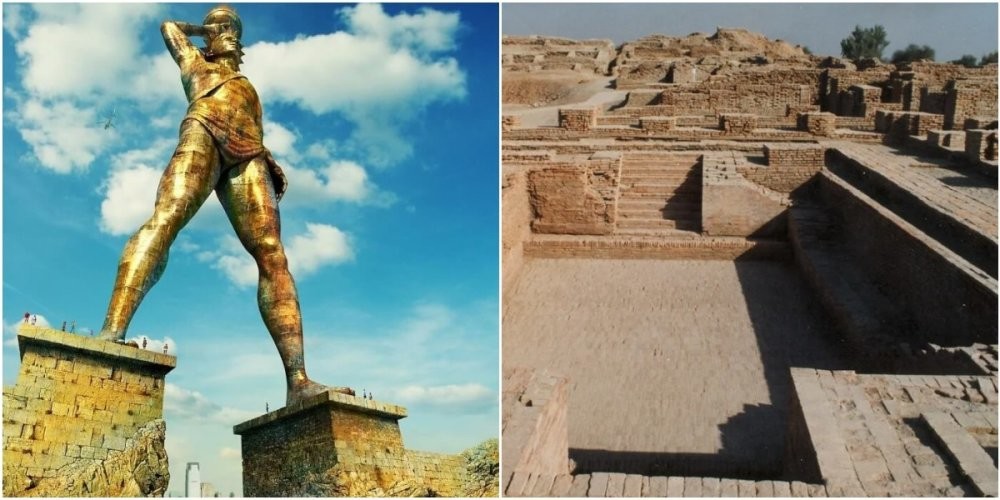
1. Great Basin (Mohenjo-Daro), Pakistan 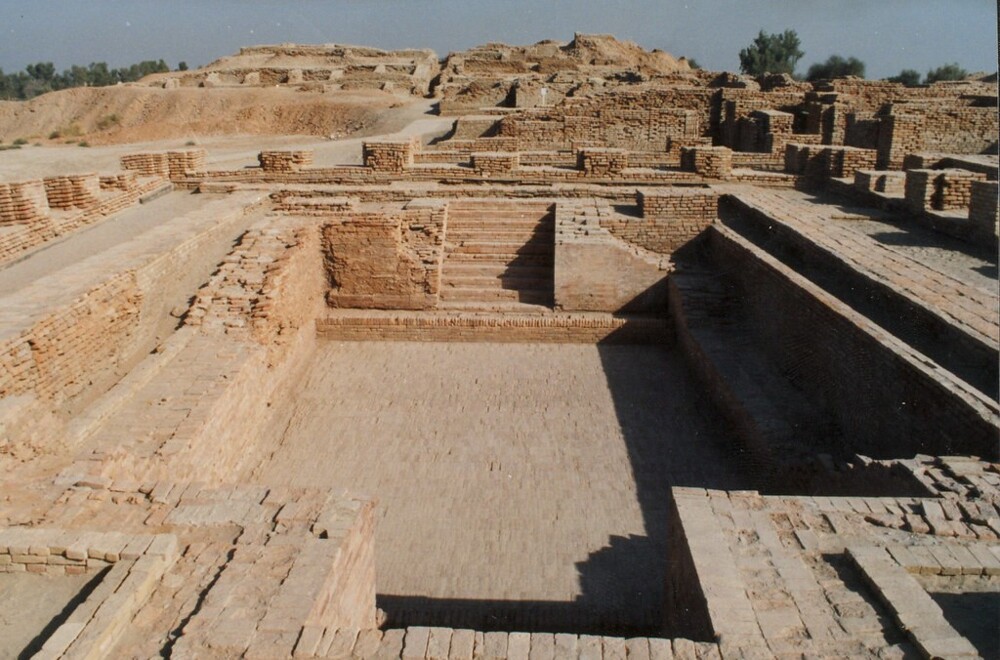
The Great Pool is one of the ancient structures that amazing engineering genius. It was discovered in 1926 in an ancient Harappan city of Mohenjo-Daro, in present-day Pakistan. It is believed that the pool was used for ritual ablutions and gatherings - it was an important part of the religion and culture of the Indus civilization. Dimensions pool - 12 by 7 meters, depth - 2.4 meters. Feature of the building - elaborate drainage system that was used to collect and reuse of water. She is considered one of the earliest examples of planning and engineering in the world, demonstrating the skills of the Indian civilization.
2. Pyramid of Djoser, Egypt 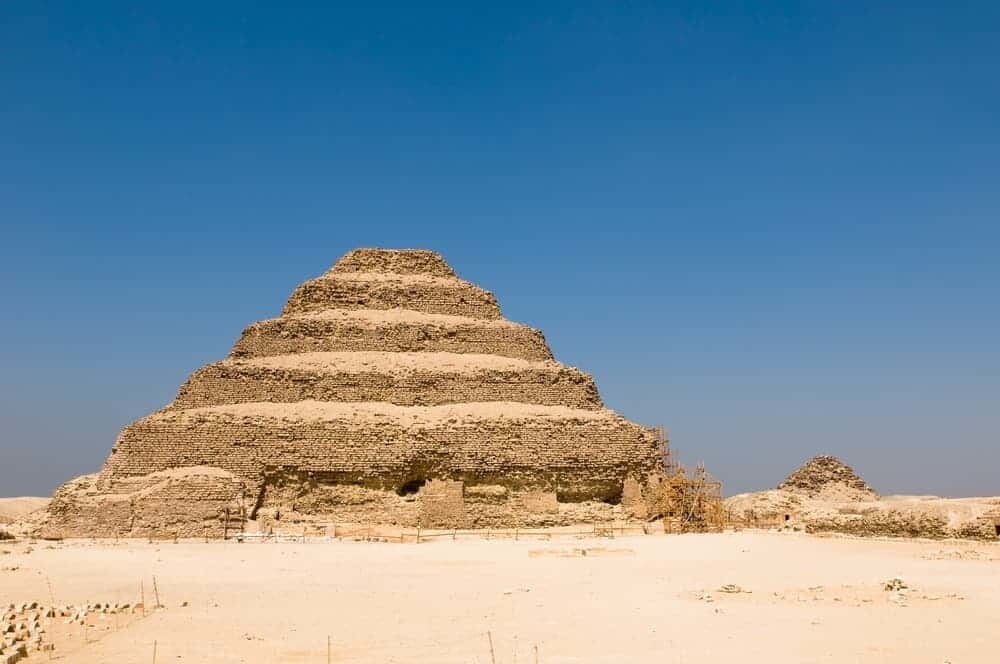
The Pyramid of Djoser is one of the testimonies of ingenuity and power of the ancient Egyptians. It was built by the architect Imhotep over 4600 years. back for the burial of Pharaoh Djoser. The architect created a unique structure by superimposing mastabas (tombs) on top of each other in a stepped pyramidal shape. Initially, the height of the pyramid was 62.5 meters - it was built from over 6 million stone blocks. Despite age, the pyramid is still an important historical object, attracting visitors from all over the world.
3. Great Ziggurat of Ur, Iraq 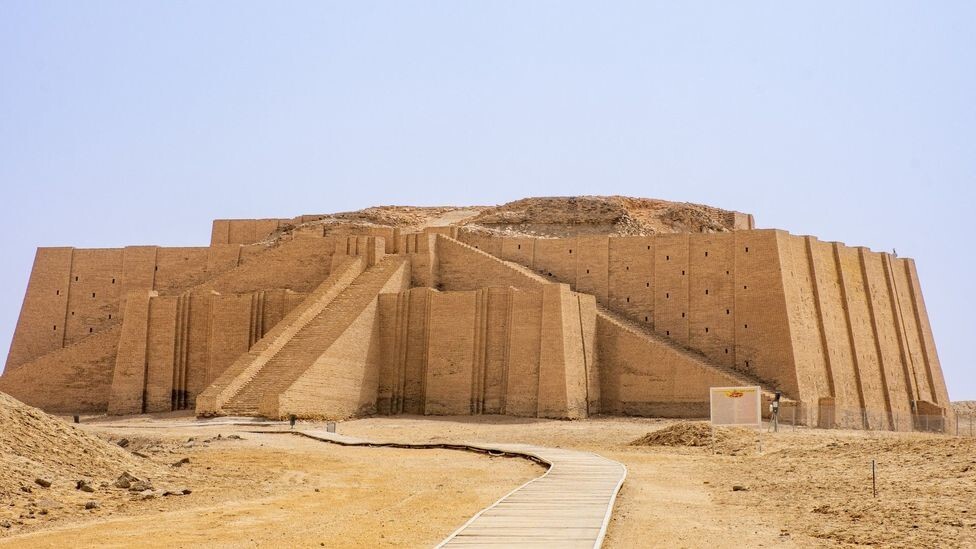
The Great Ziggurat of Ur is a huge temple complex of the Ancient Mesopotamia, in the south of modern Iraq. This is an amazing example architectural and religious building characteristic of Mesopotamia. It was erected by the Sumerians around 2100 BC, in honor of the lunar deity Nanna. It was a 20-meter building with a foundation of mud bricks and stone slabs outside. three-storey building located on platforms of various widths - and its top was the most high point of the city, offering panoramic views. Also with the upper platform, the priests watched the stars, and on one of the superstructures the temple of the god Nanna was located. But the ziggurat was not only religious construction, but also had political significance. It was erected by King Ur-Nammu from the III dynasty, who used the building to legitimize his rule and demonstrate dominion over the people of Ur.
4. Bathhouse in Hisham's Palace, Israel 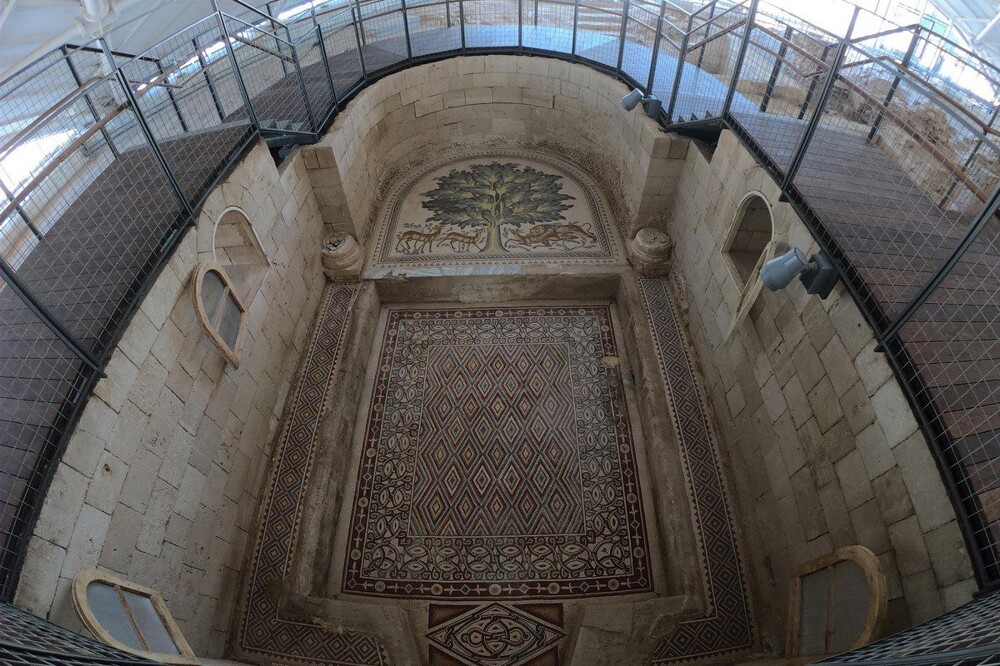
Bathhouse in Caliph Hisham's palace in Jericho, Israel, dated 2000 BC and is considered the oldest known bath in the world. It was used for religious ceremonies and social gatherings. IN it also housed an audience room (throne room), and several large mosaics of the classical period of Islamic architecture. Square Hisham Palace itself - 60 hectares. It consists of three zones: palace, mosque, courtyard and baths.
5. Pyramid of Cheops, Egypt 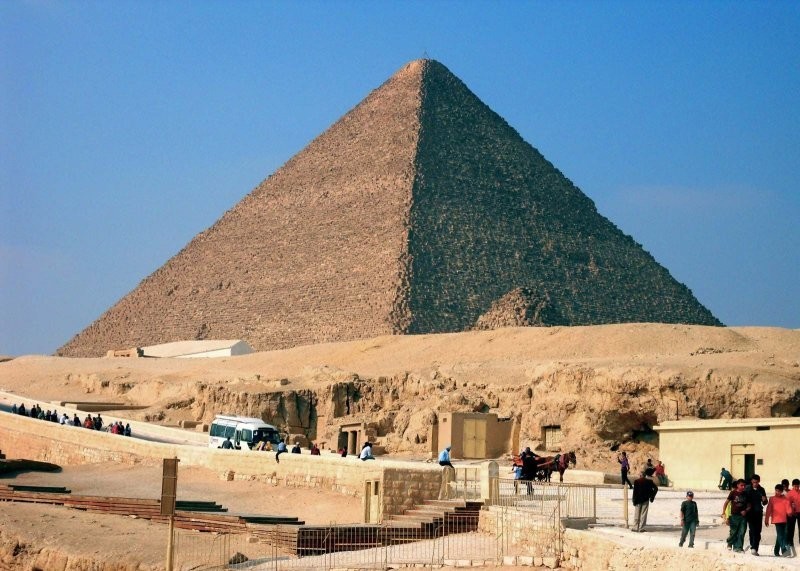
Pyramid of Cheops or the Great Pyramid of Giza, built around 2560 BC - the oldest and largest of the three pyramids at Giza, Egypt. All of them were built for the burial of pharaohs during the 4th dynasty, in 2575-2465 BC. Pyramid of Cheops remains alone of the main world evidence of innovation and genius of the ancient civilizations. Its original height is 146.60 m, and the size of the base is 230 m. It is built from 2.5 million large blocks of limestone and granite, stacked in 210 rows, and its sides are precisely oriented along four sides of the world.
6. Angkor Wat, Cambodia 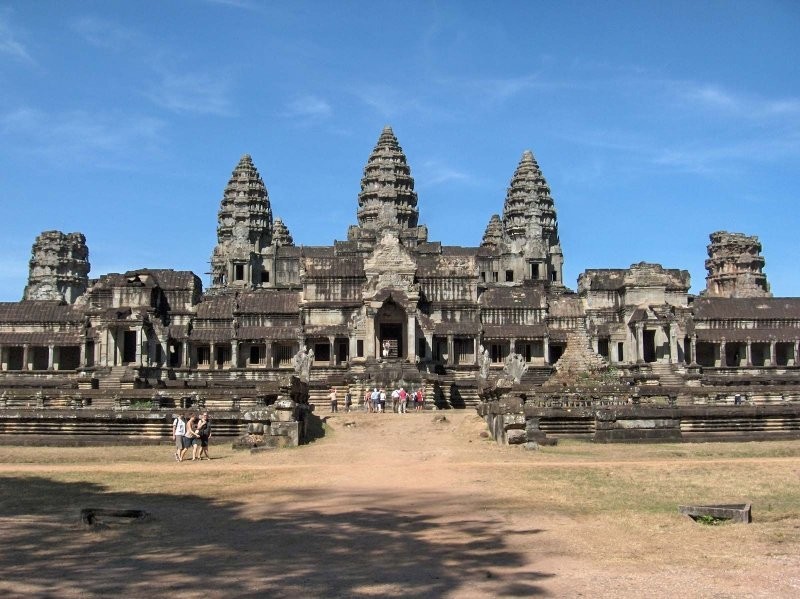
Angkor Wat is a temple complex in the province of Siem Reap on north of Cambodia. The complex built by King Suryavarman II in the 12th century, includes more than a thousand buildings on an area of 172 hectares. On his construction took 30 years. The complex was originally dedicated Hindu god Vishnu, and by the end of the 12th century it became a Buddhist temple. The complex is listed as a UNESCO World Heritage Site andone of important monuments in Southeast Asia. Also, it's amazing example of Khmer architecture. Its intricate carvings, enigmatic sculptures with religious scenes plunge into the atmosphere of life and philosophy Khmer.
7. Statue of Christ the Redeemer, Brazil 
The famous statue of Christ the Redeemer is located on the top of the mountain Corcovado in Rio de Janeiro. Its height is 30 meters, and outstretched arms the statues stretch for 28 meters. Statue built in 1931 - UNESCO World Heritage Site, one of the Seven Wonders of the World, cultural and religious symbol of Brazil. The original idea for its construction came from 1850s, but incarnation only began in the 1920s. After the First World War II Archdiocese of the Roman Catholic Church in Rio de Janeiro and local authorities set out to build a statue that would carry religious meaning. She could look different - in the form of a ball, meaning that the whole world is in the hands of God. But then it was decided to build namely Christ.
8. Colossus of Rhodes 
Giant statue of the ancient Greek sun god, Helios, stood in the port city of Rhodes in Greece. Its height was about 33 m. It was considered one of the iconic sights of Rhodes - important trading port in the Mediterranean. Originally the inhabitants of Rhodes erected a statue in 292-280 BC. e. in honor of the heroically endured city siege. Alas, the Colossus stood for a little over 50 years. It was destroyed earthquake in Rhodes in 224 BC Now in its place are only two columns. Despite its short existence, the statue reflects power and ingenuity of the Greeks.
9. Chichen Itza, Mexico 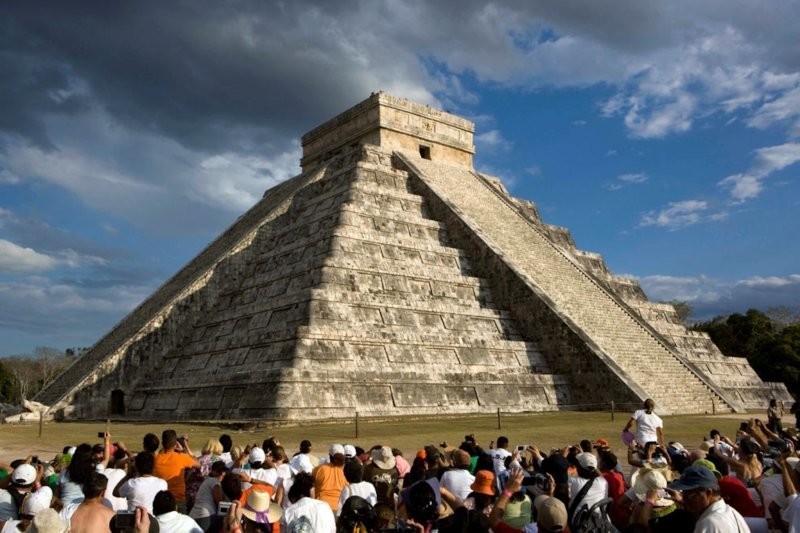
Chichen Itza is an ancient Mayan city in the north of the Yucatan Peninsula in Mexico, covering an area of 10 km². It is also included in the objects UNESCO World Heritage Site, and is one of the Seven Wonders of the World. This was the political and cultural center of the Maya, which began to be settled in 550 year of our era. The maximum number of inhabitants of the city was 35,000 Human. The most iconic places in Chichen Itza - the nine-step pyramid El Castillo and the "stadium" for ball games, the largest ground of this kind throughout Mesoamerica. Playground dimensions - 168 meters in length and 70 meters wide. Ritual games were held on it, in which the players tried to throw the ball through the stone rings. All local buildings demonstrate the advanced architectural skills of the Mayan people - not just like that Chichen Itza is the most popular tourist destination destination in Mexico.
10. Acropolis of Athens, Greece 
The Acropolis of Athens is an iconic symbol of ancient Greek civilization. The Acropolis was built in the 6th century BC and includes several temples, including the Parthenon, and a statue of Athena, created famous sculptor Phidias. The complex rises 152 meters above sea level, and is located on a rocky hill. Since 1987, he has been included in UNESCO World Heritage List. This is one of the greatest monuments architectural art that we inherited from our ancestors.






























